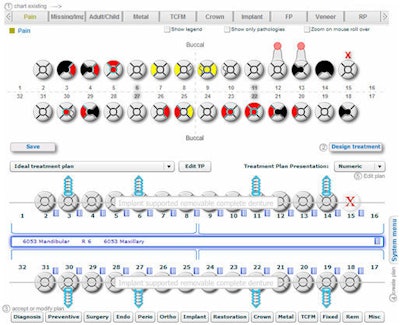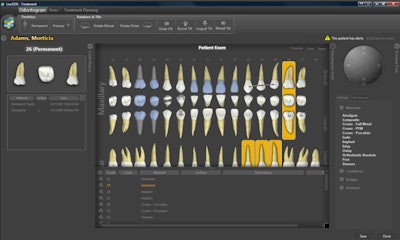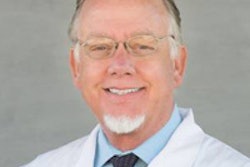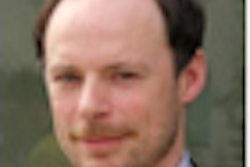
Mention "electronic health records" to a roomful of dentists -- especially in the context of patient assessment and treatment -- and you are likely to spark a lively debate.
“For dentists to adopt this, it has to make a measurable contribution to their ability to deliver good clinical care.”
— Titus Schleyer, D.M.D., Ph.D.,
director of the Center for Dental
Informatics, University of Pittsburgh
While the U.S. medical community struggles to figure out how to get its hands on the stimulus money President Barack Obama has promised to those who adopt EHRs over the next few years, dental practitioners are, for the most part, still taking the "wait and see" approach (see "U.S. stimulus bill a tease for dentistry"). The issues, they say, include cost, liability concerns, patient privacy, and the threat of too much government involvement.
But some dental entrepreneurs are hoping to change their minds. Utilizing the latest in software-development platforms and Web-based delivery models to create more user-friendly and affordable electronic records, these startups believe they can pave the way for EHR adoption in dentistry beyond just billing, scheduling, and perio charting. Their goal is the true clinical chart, in electronic form.
"When it comes to clinical management, we all want one thing: to get our patients well and keep them well. Using newer sophisticated software that makes the best use of our time and effort to do just that is the key," said Tom Cockerell Jr., D.D.S., a general dentist in Fort Worth, TX, and founder of Dental Symphony, which has developed a group of Web-based clinical tools and a Web-based patient record system. "We want to speed up processes, provide point-of-care support, allow more patient interaction, create real treatment plans rather than just billing documents, and develop a better ability to monitor health over time."
To do all of this digitally means moving into "uncharted" territory using new technologies in new ways.
"We all know that every single dental software program that exists today was born as a billing application," said Titus Schleyer, D.M.D., Ph.D., the director of the Center for Dental Informatics at the University of Pittsburgh School of Dental Medicine. "That heritage limits many dental packages because you get an 'everything and the kitchen sink' approach. And then they [the vendors] start adding on patient record components, but it is never an original design of clinical patient records with clinical utility in mind."
This is where several smaller software companies believe they have an advantage. And it comes in the form of the Internet.
Planet DDS, for example, takes a "software as service" approach. The company's Denticon system is a Web-based, on-demand practice management software application that can be configured to meet the needs of any size dental practice. It uses an application service provider (ASP) subscription model in which -- for a monthly fee -- Planet DDS hosts the software and customer data on its servers. The information can be stored, accessed, updated, and managed by the customer using a standard browser such as Internet Explorer.
"The Internet allows data to be stored in a central location on a real-time basis," said Richard Lee, CEO of Planet DDS, in a company press release. "This means that anyone, with proper security clearance, can access the data at any time from anywhere. This opens a whole new world of management and professional collaboration possibilities. Patient records, which can be paperless in Denticon, are accessible to any provider throughout the entire organization, no matter where they are." Denticon includes Dentiray, a Web-based digital image management software application, and Dentigram, a centralized, Web-based online patient communication system.
Graphic-friendly charting
Other companies are working with the latest Web-based tools to develop sophisticated, user-friendly patient assessment and charting capabilities that they say can dramatically improve care. Unlike the larger EHR model being touted in medical circles these days -- in which healthcare professionals are being encouraged to adopt digital records that will enable them to share patient information via the Internet -- these products are initially designed to take clinical charting, and patient care, to a whole new level.
Dental Symphony, for example, "is like a combination of looking at paper and using a computer," Dr. Cockerell said. It is designed to function as a scrollable patient record, with the added benefit of multiple layers of embedded support, such as sophisticated analysis of a patient's medical history and medical and pharmaceutical information tailored to each patient.
In addition to the ePatient online registration and virtual interview module, Dental Symphony features the eTreatment Planner, which allows charting of 19 different anomalies and restorations and, after "learning" the dentist's treatment preferences, generates a proposed treatment plan that accounts for existing restorations and preferences -- all in seconds, and with the appropriate ADA codes. And eMedley combines Dental Symphony's periodontal/hard-tissue charting and treatment planning systems with medical, dental, and pharmacology libraries (built-in); an emergency response system; and a prescription writer.
 |
| Here one sees the hard-tissue charting on the top set of teeth and then on the lower set of teeth. Dental Symphony has plotted extractions, implant placement, and prosthesis simply by clicking a button. Image courtesy of Dr. Tom Cockerell Jr., Dental Symphony. |
"Digital patient records are much more helpful in the clinical realm," Dr. Cockerell said. "From initiating the relationship where the medical and dental history are analyzed for risk, to the ease of input of clinical findings, to the bringing to the forefront evidence-based studies that are part of the problem list, and even the actual development of the problem list so the clinician can easily analyze the output from charting and see what the risks are -- it is all much more revealing and becomes intuitive."
LiveDDM, a Canadian start-up, is taking a similar approach. Using programming tools found in Microsoft .NET, the company is creating an open-architecture Windows-based patient charting package that offers greater functionality and a richer user experience than is possible with other clinical records software, according to Andrew Abramowicz, D.D.S., president of LiveDDM. For example, the LiveChart -- which includes a digital odontogram to chart everything from caries to orthodontic brackets, full perio charting, "drag and drop" treatment planning, and biometric fingerprint support -- features more than 11,000 3D-rendered and hand-painted graphics, making it more engaging for both clinical and patient education purposes, according to the company.
 |
| The LiveDDM Odontogram enables the user to chart everything from caries to orthodontic brackets. Image courtesy of Dr. Andrew Abramowicz, LiveDDM. |
"The legacy [practice management software] systems just keep bolting on features, and the dentists are looking at them and saying, 'How do I use this?' " Dr. Abramowicz said. "And at home they are working with nondental computer programs that are so user-friendly and easy to use. The difference between our product and competing products is that we offer a very rich experience that computer users are becoming increasingly used to and expect."
The LiveDDM delivery model is different as well. The software can be installed on your office or home computer (like the legacy practice management systems), or it can be hosted via an ASP model like Dental Symphony and Planet DDS. And while some practitioners are concerned about utilizing the Internet to share patient data, Dr. Abramowicz points out that LiveDDM uses the latest in encryption technology -- something he says even the legacy systems don't do.
"Everyone is worried about data security, but it is actually a people problem, not a computer problem," he said. "Most of the legacy systems out there do not have nearly adequate security because they don't have to. With HIPAA and PIPEDA [Personal Information Protection and Electronic Documents Act, the Canadian equivalent of HIPAA], there is more pressure to add security, so everyone has added password protection. But in our latest incarnation, patient data is protected at the record level using a 256-bit encryption mechanism. You have to secure the records, not just the database.”
Ultimately, for the dental community to embrace a "paradigm shift" of this magnitude, it will take more than just learning to navigate the latest technology upgrades and government mandates, Dr. Schleyer noted. "For dentists to adopt this, it has to make a measurable contribution to their ability to deliver good clinical care. Dentists need to feel it makes them a better dentist."
And he is convinced this will eventually happen. "The idea of sharing patient information probably isn't a concept most dentists will flock to immediately," Dr. Schleyer said. "But one thing that makes me think there is a chance is the degree to which dentists have embraced online communities and online forums. They say, 'The day I became connected to a community of colleagues, my professional isolation ended.' So dentists really do want to talk to each other about patients. The infrastructure just isn't there yet."
Copyright © 2009 DrBicuspid.com



















